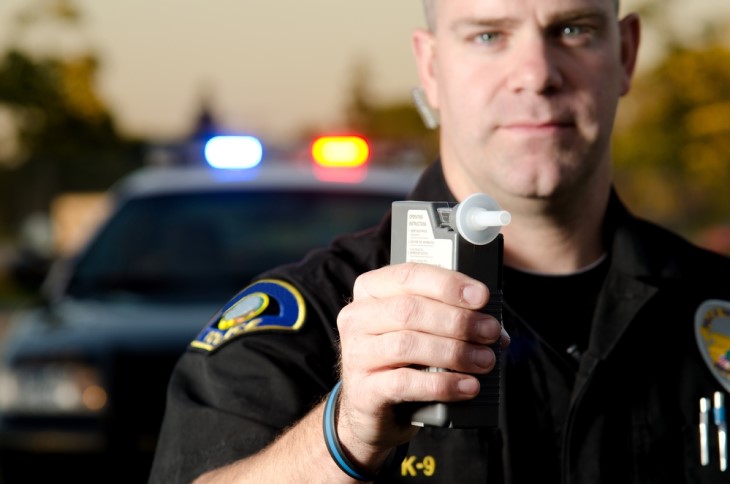
I often find myself wondering, how much am I drinking, exactly, and how do I know if I'm too drunk to do something? In this article, we're going to discuss the exact amounts of alcohol in our blood and what they look like, including how each level affects us and our ability to function. This is extra important when we're parents or grandparents, or when we drive. We're going to look at how each level of alcohol in our blood affects our physical ability, our mental state and our decision making. Let's first talk a bit about what we use to measure the level of alcohol in our blood. How do we know this?
We use (BAC): Blood Alcohol Level, which is expressed as a percentage that is equal to the weight of ethanol in grams for every 100 milliliters of blood. For example, a BAC of 0.08 means 0.08 grams of alcohol per 100 milliliters of blood. Even in the United States, it is customized to use these metric system measures for alcohol detection (breathalyzers, for examples).
Before we proceed, I'd like to say a few things about addiction
Alcohol is a part of our society and our culture, and there is nothing bad about consuming it in moderation. However, it is also an addictive substance that some people may be vulnerable to, and all can become. It's a very real problem and if you feel in any way that you are imbibing more alcohol than you should, please talk to your doctor or to a local Alcoholics Anonymous to be sure you are not on your way to alcoholism. The best way to do so is to stop immediately and taking care of yourself. This guide is for people who drink alcohol but do so moderately and responsibly. That said, some celebrations, like weddings, may represent rare times where we drink more than we're used to. So what may influence how fast we get drunk?
BAC is influenced by various factors including gender, body weight, amount and rate of alcohol consumption, and food intake. For instance, women often have higher BAC compared to men after consuming the same amount of alcohol. Eating food can decrease the rate of alcohol absorption and increase its elimination, leading to a lower BAC. If you want to learn more about how these factors may affect you, read on, if not, skip this section straight to the effects.

Gender: The differences in BAC between men and women even when consuming the same amount of alcohol can be attributed to several physiological factors. Men generally have a higher percentage of water in their bodies compared to women, which allows them to dilute alcohol more effectively. Moreover, women have less of the enzyme dehydrogenase, which breaks down alcohol in the body, leading to higher concentrations of alcohol in the bloodstream.
Body Weight and Composition: Body weight plays a significant role in determining BAC. People with more body mass generally have more water in their bodies, which helps dilute alcohol. However, it's not just weight but body composition that matters. A higher ratio of fat to muscle can lead to higher BAC because fat doesn't absorb alcohol as effectively as muscle.
Amount and Rate of Alcohol Consumption: The more alcohol you consume and the faster you drink it, the higher your BAC will be. The body can only metabolize a certain amount of alcohol per hour, so consuming alcohol faster than the body can process it leads to higher BAC levels.
Food Intake: Eating before or while drinking can have a significant effect on BAC. Food in the stomach slows down the absorption of alcohol into the bloodstream. This is because food competes with alcohol for absorption and also stimulates the production of stomach enzymes that help break down alcohol.
Metabolic Rate: Each person's body metabolizes alcohol at a different rate, influenced by genetics and overall health. A faster metabolism can lead to alcohol being processed more quickly, potentially resulting in a lower BAC.
Type of Alcohol: The concentration of alcohol in different drinks can also influence BAC. For instance, hard liquors may raise BAC more quickly than beer or wine.
Medications and Health Conditions: Certain medications and health conditions can affect how the body processes alcohol, potentially increasing BAC or the duration alcohol stays in the system.
Age: As people age, their bodies may become less efficient at processing alcohol, potentially leading to higher BACs.
Hydration Level: Dehydration can lead to a higher BAC because there is less water in the body to dilute the alcohol.

0.01% - 0.04%
Beer (5% alcohol): About 1 to 2 drinks.
Wine (12% alcohol): About 1 to 2 drinks.
Whisky (40% alcohol): Approximately 1 drink.
0.05% - 0.07%
Beer: Approximately 2 to 3 drinks.
Wine: About 2 to 3 drinks.
Whisky: 1 to 2 drinks.

0.08%
Beer: Roughly 3 to 4 drinks.
Wine: Around 3 drinks.
Whisky: 2 to 3 drinks.
0.08% - 0.12%
Beer: About 3 to 5 drinks.
Wine: Approximately 3 to 4 drinks.
Whisky: 2 to 4 drinks.

0.12% - 0.15%
Beer: Around 4 to 6 drinks.
Wine: About 4 to 5 drinks.
Whisky: 3 to 5 drinks.
0.15% - 0.2%
Beer: 5 to 8 drinks.
Wine: 5 to 7 drinks.
Whisky: 4 to 6 drinks.
High BAC Levels (0.2% and above)
0.2% - 0.3%
Beer: 7 to 10+ drinks.
Wine: 6 to 9 drinks.
Whisky: 5 to 8 drinks.
0.3% - 0.4%
Beer: 10 to 14+ drinks.
Wine: 9 to 12+ drinks.
Whisky: 8 to 11+ drinks.
0.4% - 0.5%
Note: Above this extremely high level, the number of drinks required varies wildly and should never be attempted.
Above 0.5%

Breathalyzers are able to measure your Blood Alcohol Concentration (BAC) through your breath because when you consume alcohol, it isn't immediately broken down. Instead, it enters your bloodstream in its unchanged chemical form, circulating throughout your body. As your blood circulates through your lungs, a portion of the alcohol passes into the alveoli, the tiny air sacs in your lungs. This alcohol is then detectable in your exhaled breath. The ratio of alcohol in your breath to that in your blood is approximately 2,100 to 1, meaning that the alcohol content in 2,100 milliliters of your exhaled breath would be equivalent to that in 1 milliliter of your blood.
After alcohol is absorbed into your body and bloodstream, it exits primarily in two ways. Roughly 10% is eliminated through your breath, urine, and sweat. The remaining 90% is metabolized by your body. The rate at which your body breaks down alcohol varies based on several factors, but it's commonly accepted that the body metabolizes about 0.015 of your BAC per hour. Therefore, if you stop drinking, your BAC typically decreases by 0.015 every hour.
A standard drink, which contains 14 grams of alcohol, can raise your BAC by up to 0.02, depending on your body size, gender, and other factors. Within approximately one hour, your BAC could nearly return to zero. However, if you consume drinks more quickly or in larger quantities (like having multiple shots), your liver can't process the alcohol fast enough, leading to an accumulation in your bloodstream and a higher BAC. For an average person, consuming three or four drinks in an hour can result in reaching a BAC of 0.08.
Following this general rule, a BAC of 0.08 would decrease to 0.065 after one hour. It would take about five hours and twenty minutes for your body to fully metabolize the alcohol and eliminate it. This is why drinking late at night can be risky. If your BAC is high enough when you go to bed, you might still be under the influence when you wake up, which can be problematic if you need to drive.
Breathalyzers can detect alcohol in your system as soon as 15 minutes after you start drinking and will continue to do so as long as there's alcohol in your bloodstream. Remedies like coffee, cold showers, or sleeping do not expedite the sobering process. The only way to lower your BAC is to allow time for your body to metabolize the alcohol. Therefore, it's important to drink responsibly and always have a plan for getting home safely if you've been drinking.

Chronic Effects of Heavy Drinking
Brain Damage: Prolonged heavy drinking can lead to irreversible brain damage. This includes cognitive impairments like memory loss, difficulty with coordination and motor skills, and a decreased ability to think abstractly. Chronic alcohol abuse can also lead to a condition known as Wernicke-Korsakoff syndrome, a type of dementia caused by thiamine (vitamin B1) deficiency common in heavy drinkers.
Liver Disease: Heavy drinking takes a significant toll on the liver and can lead to a variety of issues, including fatty liver, alcoholic hepatitis, fibrosis, and cirrhosis. Cirrhosis is particularly serious and involves the scarring of the liver, leading to its failure.
Heart Disease: Chronic heavy drinking increases the risk of heart disease. It can cause high blood pressure, irregular heartbeats (arrhythmias), cardiomyopathy (a disorder of the heart muscle), and an increased risk of stroke.
Cancer: There's a well-established link between heavy alcohol consumption and an increased risk of several types of cancer, including liver, breast, mouth, throat, esophagus, and colorectal cancers.
Mental Health: Alcohol misuse is strongly correlated with mental health disorders, including depression and anxiety. It can exacerbate existing mental health issues and may contribute to the development of new ones.
Alcohol Poisoning
Causes: Alcohol poisoning typically results from consuming a large quantity of alcohol in a short period. The body's systems become overwhelmed by the amount of alcohol in the bloodstream and are unable to process it efficiently.
Symptoms: Signs of alcohol poisoning include confusion, vomiting, seizures, slow or irregular breathing (less than eight breaths a minute or gaps of more than 10 seconds between breaths), hypothermia (low body temperature), pale or bluish skin color, unconsciousness, and inability to be awakened.
Dangers: Alcohol poisoning is a medical emergency. It can lead to coma or death due to respiratory failure, severe dehydration from vomiting (leading to brain damage), hypothermia, irregular heartbeat, or choking on vomit.
Treatment: Immediate medical attention is required for alcohol poisoning. This may include supportive care such as oxygen therapy, fluids to treat dehydration, and monitoring to prevent choking. In severe cases, a person may require a breathing tube or dialysis to speed the removal of alcohol from their system.
Understanding these effects is crucial, especially in the context of driving and social drinking. Responsible consumption and awareness of one's limits are essential to prevent the adverse effects of alcohol. So keep this information in mind, bookmark this page and make sure you know how much you're drinking!